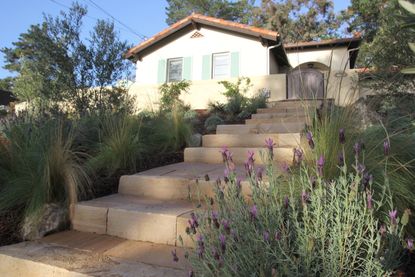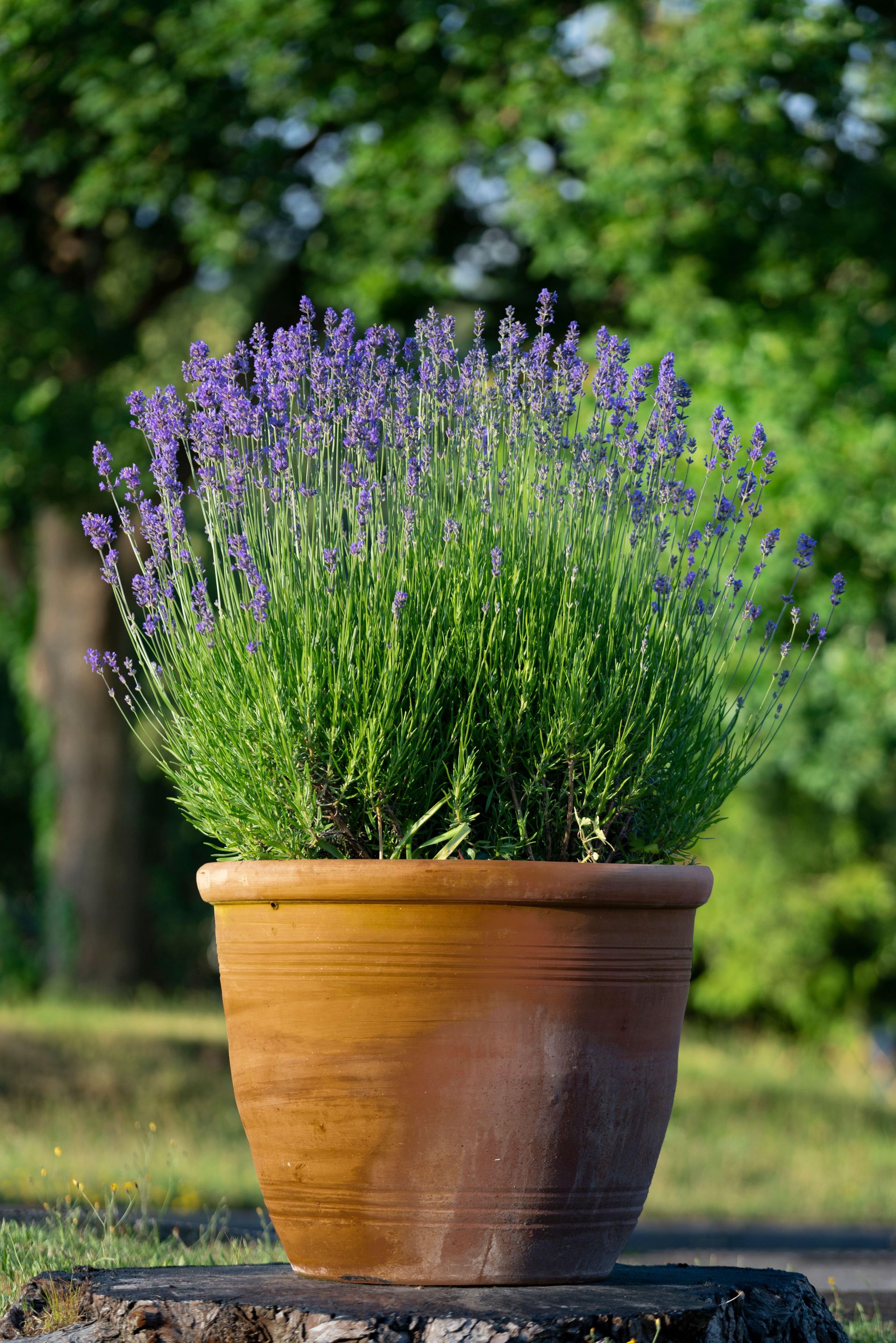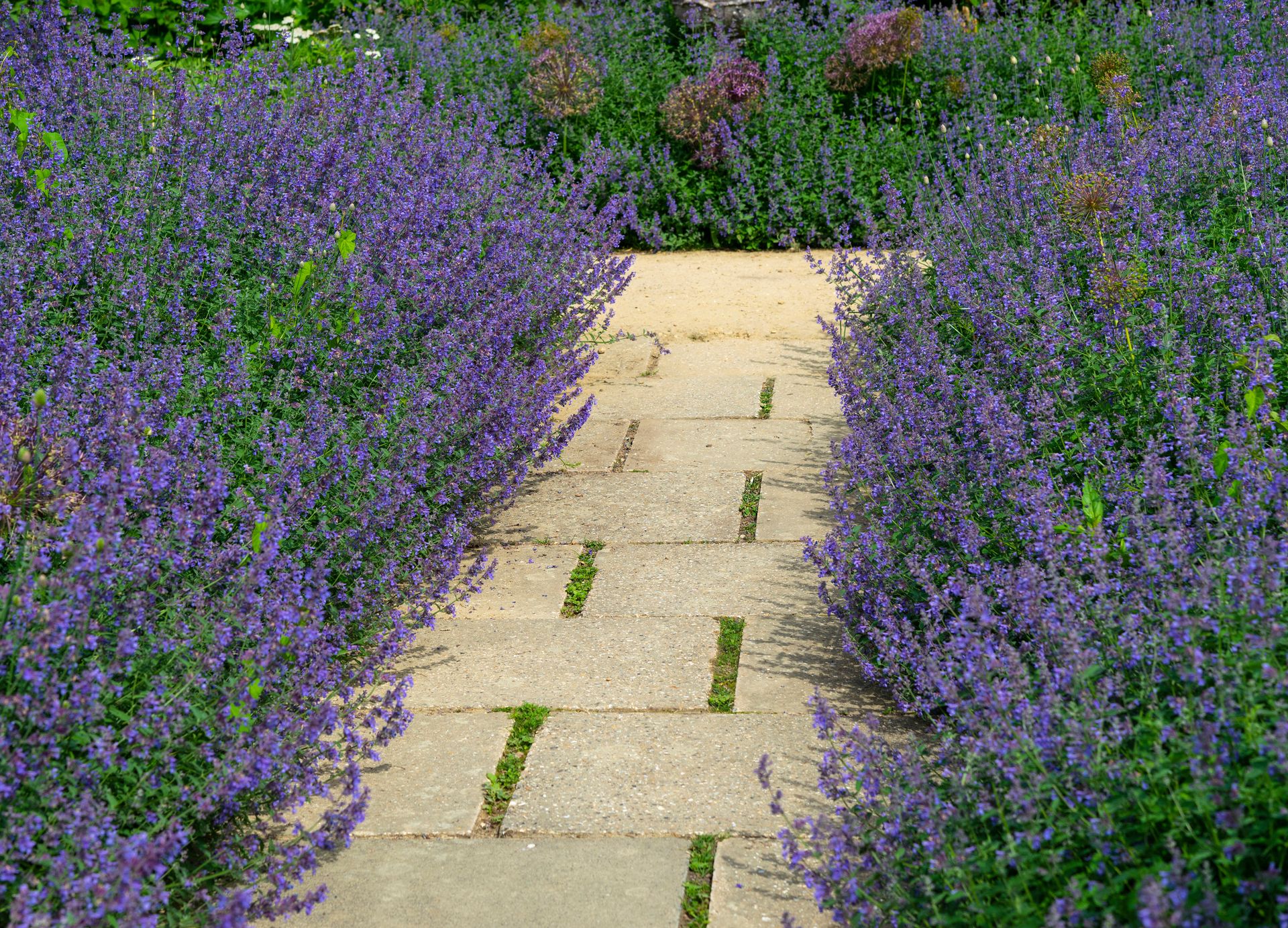Lavender plant care - the 4 things gardening pros want you to know about this backyard favorite
Experts reveal their top tips for getting the most out of the lavender plants in your backyard


There's a reason so many people want to grow lavender in their backyards. Visions of a European summer are instantly ignited upon seeing the hot blue sky burning over the endless rows of lavender. We simply can't get enough. So much so that the lavender is top of our gardening list to inject some punchy colour and delicate aroma into our garden for Provence vibes all summer long.
The Mediterranean native belongs to the same herb family as mint and comes in 47 varieties. Variations include color, size, and foliage. English Lavender is the type associated with the aforementioned fields of Provence and provides that traditional rustic look. Depending on your desired look, alternative varieties are available. Small potted lavender plants can be used decoratively around your garden or as part of a larger container garden display. Alternatively, lavender can be utilized more structurally to provide edging along walkways and borders in a modern garden. We love how they add an informal barrier between borders and around seating areas.
Adding new plants to your garden can be intimidating, especially when they are such a unique flower such as lavender. We have all been there when you get over-excited buying new exotic plants without the knowledge of how to effectively look after them. Here's what you need to know about growing lavender, according to the experts.
Should you deadhead lavender?
Deadheading plants is the process of removing the head of the fully spent flowers. It can be difficult to know how and when to do this, particularly on a lavender plant where the blooms don’t look obviously dead. Nikhil Arora, the co-founder of Back to the Roots, says that deadheading lavender is necessary to keep the plant healthy. ‘The process encourages the plant to produce more flowers and keep it looking fresh,’ he says.
Snipping off the faded blooms leaves healthy-looking leaves ready for new growth. Regular deadheading maintains neat and tidy borders plants and prolongs the flowering season. To prune your lavender plant ‘pinch off the old/spent flowers with your fingers or using a pair of scissors,’ says Arora. This quick practice with stimulate the plants to produce fresh growth and further bloom.
Diana Cox, master gardener and founder of Gardening Talk, makes a point to deadhead her lavender plants twice a year in spring and fall to ensure she can enjoy them for their full season. So put a date in the diary to wake up your lavender plants before the summer months.

Can you grow lavender from cuttings?
Once you have one lavender plant ,you will no doubt want more. Its addictive aromatics and vibrant color are the perfect addition to gardens of all shapes and sizes so it’s no surprise you want to encapsulate your garden in it. Luckily for you, there is no need to buy another as you can grow lavender from the cuttings of your original plant. By following a few simple steps and a touch of patience you will have a brand new plant.
‘Lavender can be propagated from cuttings with great success,’ according to plant expert Andrew Laurier, from Be.Green. ‘Trim a 4-6 inch section of the stem just below a leaf node, dip the cut end in a rooting hormone powder to enhance rooting,’ he says. You could also try homemade willow water to stimulate your cuttings. Following this plant to cutting in a mixture of sand and potting soil, making sure your pot has good drainage. After a few weeks in a warm and bright location, roots will develop and you can transplant the cutting into a larger pot or straight into your garden, Laurier explains.
To give your cuttings the best chance of success Tammy Sons from TN Nursery suggests doing this process in the summer season. ‘they will offer much higher of a success rate than spring cutting’. To ensure a garden covered in lavender ahead of next summer, discover your obsession now and get propagating.

Price: $39.95
Size: 1 gallon
Does lavender prefer sun or shade?
As you might expect Lavender is a sun seeker. Whilst it will tolerate some shade, it thrives as one of the best flowers for pots in full sun. Laurier and Cox agree that lavender requires a minimum of six hours of direct sunlight. This is needed to ‘maintain robust growth and produce an abundance of fragrant flowers’ says Laurier, ‘it's best to provide it with ample sunshine to ensure optimal development.’

How much water does it need?
With new plants it can be difficult to determine how much water is needed, and it may differ in regards to how to water plants in pots versus plants in flower beds. Overwatering can be detrimental to a plant's health but we need to balance this with enough water to keep alive and hydrated. It might be logical to think a plant scorching in the direct sun is in need of extra water, however, this might be doing more harm than good. We asked our experts for their tips on watering.
‘Overwatering can be detrimental to lavender plants, even leading to their demise,’ says Cox, ‘lavender is susceptible to root rot, so it is crucial to prevent the soil from becoming excessively moist.’ Arora echoes the dangers of overwatering, highlighting yellowing leaves and wilting as key signs of overwatering.
Another way to inspect if your plants are suffering from being overwatered is to feel with your hands. Sons advises that if the soil around the plant is moist past two inches in depth, it is getting overwatered.

Lavender is one of the best plants for a dry garden, as it's drought tolerant so it prefers drier soil and only requires moderate watering, even in the hottest weather. Laurier has provided some key guidelines for watering. Firstly, young plants should be watered deeply once or twice a week ‘to help establish new roots’. Once established reduce the watering schedule. ‘Lavender typically requires watering every 10-14 days, allowing the soil to dry out between watering sessions,’ says Laurier.
It is important to factor in conditions and adjust the frequency depending on weather and soil conditions. Take into account rainfall and soil type before watering your lavender, being careful not to saturate the soil. Lavender plants in containers may require more frequent watering, so keep in mind the tips on how to water plants in pots and keep your container garden happy.

Price: $8.97
Size: 20 seeds
Be The First To Know
The Livingetc newsletter is your shortcut to the now and the next in home design. Subscribe today to receive a stunning free 200-page book of the best homes from around the world.

Amy recently completed an MA in Magazine Journalism at City, University of London, with experience writing for Women’s lifestyle publications across arts, culture, and beauty. She has a particular love for the minimalist aesthetic mixed with mid-century furniture, especially combining unique vintage finds with more modern pieces. Her previous work in luxury jewellery has given her a keen eye for beautiful things and clever design, that plays into her love of interiors. As a result, Amy will often be heard justifying homeware purchases as 'an investment', wise words to live by.
-
 How to Thaw a Frozen Pipe — Learn Everything You Need to Know in 5 Minutes With This Guide
How to Thaw a Frozen Pipe — Learn Everything You Need to Know in 5 Minutes With This GuideWinter storm caught you off guard? We asked an expert — just how do you thaw a frozen pipe?
By Hugh Metcalf Published
-
 The 12 Very Best Silk Bedding Pieces — As Our Style Editor Says: 'It's What Dreams Are Made Of!'
The 12 Very Best Silk Bedding Pieces — As Our Style Editor Says: 'It's What Dreams Are Made Of!'Slumber in lustrous luxury with the very best silk bedding sheets, duvets, pillowcases, and more — your sleep score will thank us later
By Julia Demer Published

